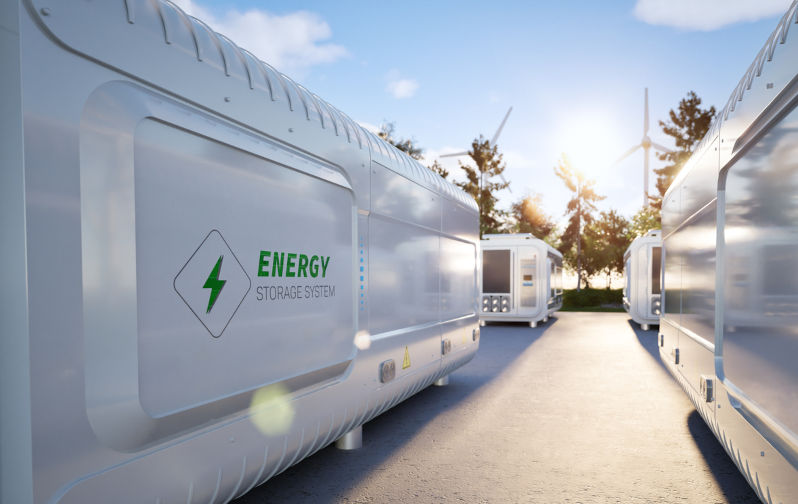'Watershed moment': Big battery storage prices hit record low in huge China auction
July 4, 2025
The price for big battery storage modules have hit a record low in the latest giant auction in China, where more than 70 bidders competed for 25 gigawatt hours of capacity in what is being described as a “watershed moment” for the industry.
Battery storage has already emerged as the most compelling energy storage technology for grids scrambling to boost their dispatchable power capacities as they add more wind and solar, and as ageing coal and gas plants prove less capable to fill the gap when needed.
The technology has already delivered significant price reductions in recent years, undermining the case for gas-fired generation, where prices have jumped and delivery times for new projects have blown out because of supply chain shortages.
The latest auction in China offered 25 gigawatt hours of capacity for lithium iron phosphate batteries over a range of storage periods — one hour, two hours and four hours — and the results (the first time they have been broken down on storage duration) have stunned even seasoned onlookers.
The knockout price was a bid of US$51.59/kWh for a four-hour battery (the average was US$59c/kWh), which Energy Storage News says represents a 30% drop from 2024 levels, and other side was a 15% fall from recent record lows.
Bidders included established majors such as CATL, BYD, Envision and Sungrow, as well as newer players such as Ganfeng Lithium.
“The bid is being viewed as a watershed moment,” wrote ESN.
“The 25 GWh tender is widely seen as a turning point for the Chinese storage sector’s shift from policy-driven growth to a more sustainable, market-oriented model. With system costs declining rapidly, LFP batteries are gaining traction across grid, generation, and end-user segments.”
Marek Kubik, co-founder of US-based battery storage supplier Fluence, and now a director at the Saudi-based halo project Neom, also described the auction results as a new milestone, noting that the prices reflected a full energy storage system, and not just cell prices. They do not, however, include civil construction costs.
“These rapid and sustained ESS price falls will continue to have big implications for other technologies aiming to compete with Lithium-ion’s crown,” Kubik wrote on LinkedIn.
“They will also pull forward the economic tipping points for longer duration 8-hour to 10-hour systems needed to shore up ‘Round The Clock’ renewables use cases, which disproportionately stand to benefit.”
That assessment follows new analysis that suggests the plunging cost of solar PV and battery storage has opened up a new frontier in the transition to green energy, with cities and industries around the world now able to access low cost, 24-hour solar generation.
According to the UK-based energy think tank Ember, the combined cost of solar and battery storage has fallen 22% in the last year alone.
“This is a turning point in the clean energy transition,” says lead analyst Kostansta Rangelova. “Around-the-clock solar is no longer just a technical possibility and distant dream, but an economic reality."
The cost advantage of battery storage was underlined this week by federal Energy Minister Chris Bowen, when asked if the federal government was thinking of allowing gas to compete with battery storage in its series of auctions under the Capacity Investment Scheme.
“Do you know how many auctions gas has won against renewables? It’s a round number. Zero,” Bowen said.
(“Gas) can’t compete because the economics are so different. So, no, we won’t be introducing gas into the Capacity Investment Scheme. I’ve made that clear from the beginning.”
The competing economics of gas-fired generation has been underlined by the sheer scale of battery storage projects being delivered onto Australia’s grid, and their rapid construction and delivery. Major gas generation projects such as Snowy Hydro’s Hunter Valley project have suffered blowouts in costs and delays.
One of Australia’s biggest energy companies, Alinta, last week announced that it was going ahead with the first stage of a massive battery project — potentially sized at 500MW and 2000MWh — in South Australia, because of the falling costs of battery storage.
It will be sited next to a proposed gas fired peaking plant that Alinta is yet to commit to. The plant was first proposed a decade ago, and won development approval, but Alinta is still not convinced of the economics, despite the state already reaching 75% annual share of wind and solar, and heading to 100% net renewables by 2027.
Kubik notes that intense competition may mean that margins are razor thin at this point, but it could also mean that the industry is seeing another step change in scale-driven cost breakthroughs and rapid innovation in product design.
The falling cost of battery storage has made it very difficult for competing technologies, such as pumped hydro, to compete in the various capacity auctions in Australia, despite the promise of sizeable funding options in states such as South Australia.
This is causing issues for policy makers and market operators, who judge that some form of longer duration storage capacity — either in the form of pumped hydro, gas, or some other technology such as solar thermal or compressed air — is required to support the rapid rollout of renewables.
It is likely to be a key issue for the Nelson review of energy markets in Australia, which is due to report on its recommendations in coming months.
Republished from Renew Economy, 2 July 2025
The views expressed in this article may or may not reflect those of Pearls and Irritations.
